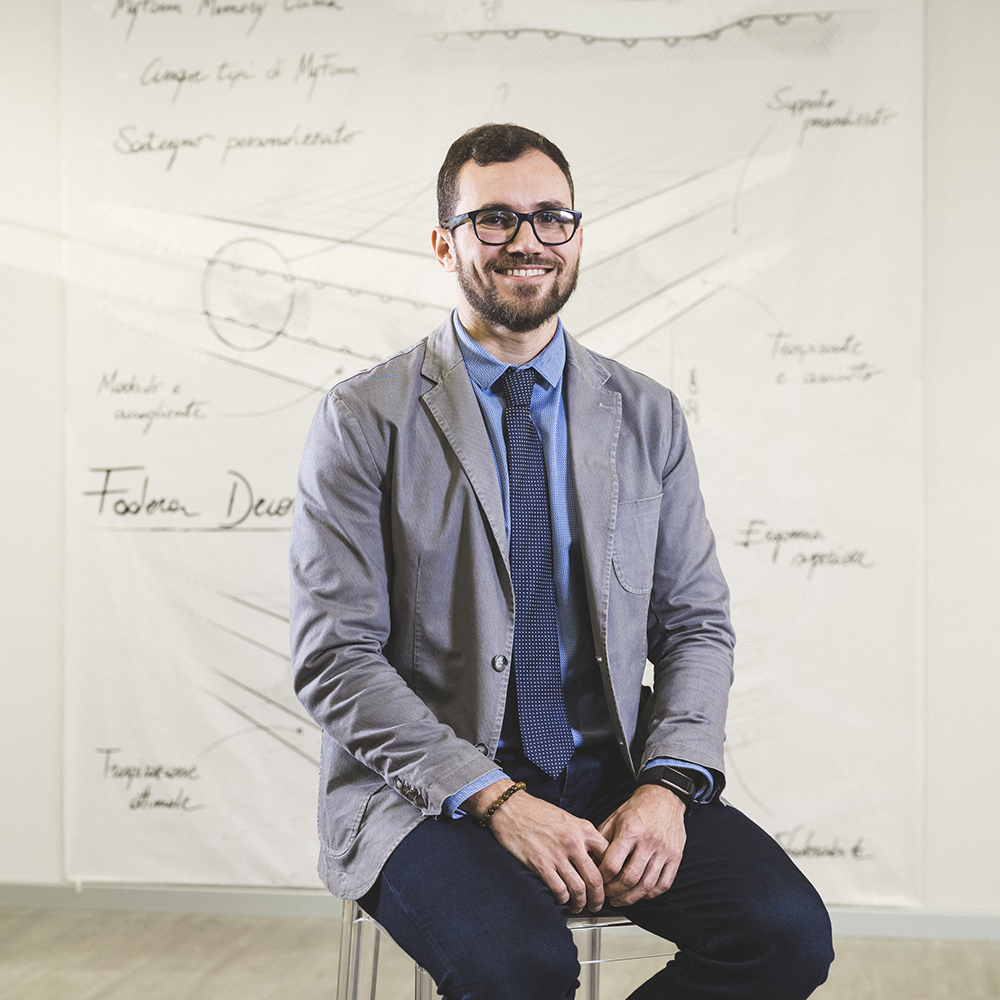LaMSS, Laboratory of Movement & Sport Science
Director: Dr. Jacopo Vitale
Jacopo Vitale, Ph.D.
Bio
Jacopo A. Vitale received the Master’s Degree in Sports Science for Health in 2012 and the Doctoral degree (PhD) in Sports Science in 2016, both from Università degli Studi di Milano, Italy. During his PhD career, He studied the biological rhythms, with a chronobiological approach, in sports performance under the supervision of Prof. Franca Carandente in Milan, Italy and Prof. Andi Weydahl in Alta, Norway. He has expertise in rhythmometric analysis, sleep monitoring through actigraphy, sport physiology and sport science. He is a post-doc researcher in the Laboratory of Biological Structures Mechanics since July 2016 and he is taking part in a clinical research project concerning Sarcopenia and risk of fall in elder post-menopausal osteoporotic women. Jacopo is also a strength and conditioning coach of professional American football, soccer and ski with particular expertise in sports performance and injury prevention strategies.
Publications
Vitale JA, Weydahl A. Chronotype, Physical Activity, and Sport Performance: A Systematic Review. Sports Medicine. 2017. [Epub ahead of print].
Lombardi G, Vitale JA, Logoluso S, Logoluso G, Cocco N, Cocco G, Cocco A, Banfi G. Circannual rhythm of plasmatic vitamin D levels and the association with markers of psychophysical stress in a cohort of Italian professional soccer players. Chronobiology International. 2017;34(4):471-479.
Bruno-Brayda M, Viganò M, Cauci S, Vitale JA, De Girolamo L, De Luca P, Lombardi G, Banfi G, Colombini A. Plasma vitamin D and osteo-cartilaginous markers in Italian males affected by intervertebral disc degeneration: focus on seasonal and pathological trend of type II collagen degradation. Clin Chim Acta. 2017;471:87-93.
Vitale JA, Bassani T, Galbusera F, Bianchi A, Martinelli N. Injury rates in martial art athletes: anthropometric parameters and training volume, but not foot morphology indexes, are predictive risk factors for lower limb injuries. J Sports Med Phys Fitness. 2017. [Epub ahead of print].
Vitale JA, La Torre A, Baldassarre R, Piacentini MF, Bonato M. Ratings of Perceived Exertion and Self-reported Mood State in Response to High Intensity Interval Training. A Crossover Study on the Effect of Chronotype. Frontiers in Psychology. 2017;8:1232.
Bonato M, La Torre A, Saresella M, Marventano I, Merati G, Vitale JA. Salivary cortisol concentration after high-intensity interval exercise: Time of day and chronotype effect. Chronobiology International. 2017. 34(6):698-707.
Vitale JA, Roveda E, Montaruli A, Galasso L, Weydahl A, Caumo A, Carandente F. Chronotype influences activity circadian rhythm and sleep: difference in sleep quality between weekdays and weekend. Chronobioloy International. 2014; 32(3):405-15.
Vitale JA, Caumo A, Roveda E, Montaruli A, La Torre A, Battaglini CL, Carandente F. Physical attributes and NFL combine performance tests between Italian national league and american football players: a comparative study. Journal of Strength and Conditioning Research. 2016; 30(10):2802-8
Roveda E, Vitale JA, Bruno E, Montaruli A, Pasanisi P, Villarini A, Gargano G, Galasso L, Berrino F, Caumo A, Carandente F. Protective effect of aerobic physical activity on sleep behaviour in breast cancer survivors. Integrative Cancer Therapies. 2017;16(1):21-31.
Vitale JA, Bonato M, Galasso L, La Torre A, Merati G, Montaruli A, Roveda E, Carandente F. Sleep Quality and High Intensity Interval Training at two different times of day: a crossover study on the influence of chronotype in male collegiate soccer players. Chronobiology International. 2017; 34(2):260-268.

